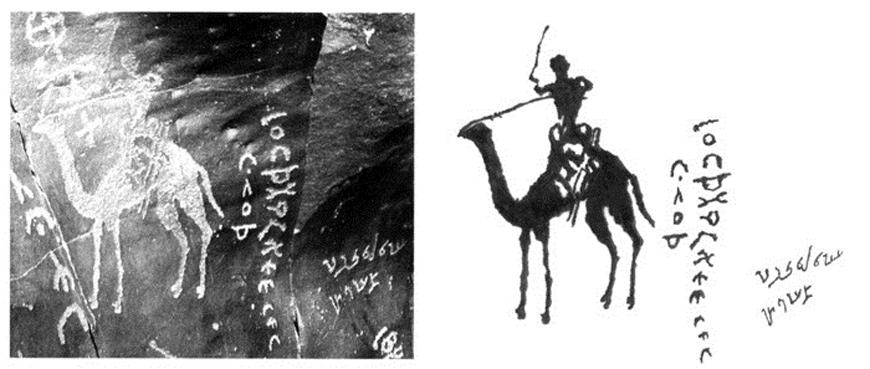- Local News
- Mon-2020-09-07 | 03:13 pm

Nayrouz News Agency :
An inscription from Wadi Rum drew the attention of a Jordanian epigraphist who studied various patterns in the construction of tombs in the northern Arabia.
Although the size and the measures of the cairn /tumuli (mound) on which the present inscription was placed are unknown, it is worth to refer to a similar tradition of funerary tumuli in northern Arabia, said Professor Hani Hayajneh from Yarmouk University in an e-mail interview with The Jordan Times, adding that it provided us with a short investigation of grave types in pre-Islamic north Arabia.
"These tumuligraves are similar to the round or oval grave heaps, which are constructed of unhewn cut out stones and the burial mentioned in our inscription might be similar to this type,” Hayajneh noted, adding that the Classical Arabic tradition explained balñya as a pre-Islamic practice related to camel or rarely, a mare, "which it was the custom to tether at the grave of its master”, its head turned to the rear and covered with a saddle-cloth.
Furthermore, Muslim tradition tried to refer this to the fact that the Pre-Islamic Arabs in the so-called Ignorant period believed in the resurrection; they were convinced that the animal would serve as a mount for its master on the day of resurrection, while those who rose from the dead without a baliya, and were therefore of inferior status, would go on foot, Hajayneh underlined, adding that baliya is also defined as a she-camel for which a pit was dug, in which she was left until she dies.
"From eastern Arabia, an excavation in Jabal Buhays near Al Madam in the interior of the UAE, found a skeleton of a six-year old female dromedary,” Hayajneh said, adding that the dating, judging by the remnants of the stomach contents of the animal, can be between 655 and 670 AD, and it seems that it was buried with a warrior whose remains were found some metres apart within the same re-used Bronze Age grave structure.
In the light of the preceding information, the archaeological context of the inscription in Wadi Rum can be tested, he continued, noting that letters resemble those applied in Madain Saleh, in Saudi Arabia, on the Nabataean tombs from the 1st century AD.
Hayajneh drew two conclusions from the correspondence between two scholars who studied this inscription before him, John Strugnell (1930-2007) and Diana Kirkbride(1915-1997):”The first is that the inscriptions stood on a cairn over a pit. The bones excavated by Kirkbride and Strugnell, being in a pit, correspond with the archaeology of the camel burials in sites in southern and eastern Arabia and with the information provided by the Classical Arabic tradition, where a pit was dug for the baliya. The second point is that the bones were found burnt in the pit of Wadi Rum, which accords again with the information provided by Classical Arabic sources regarding burning the baliya.”
Arabian stelae depict a camel rider with a lance, sword and spears, whichcorresponds to the fact that the deceased persons found in a close connection to camel burials were warriors, a fact which the archaeology in Arabia clearly proved, Hayajneh underscored.








